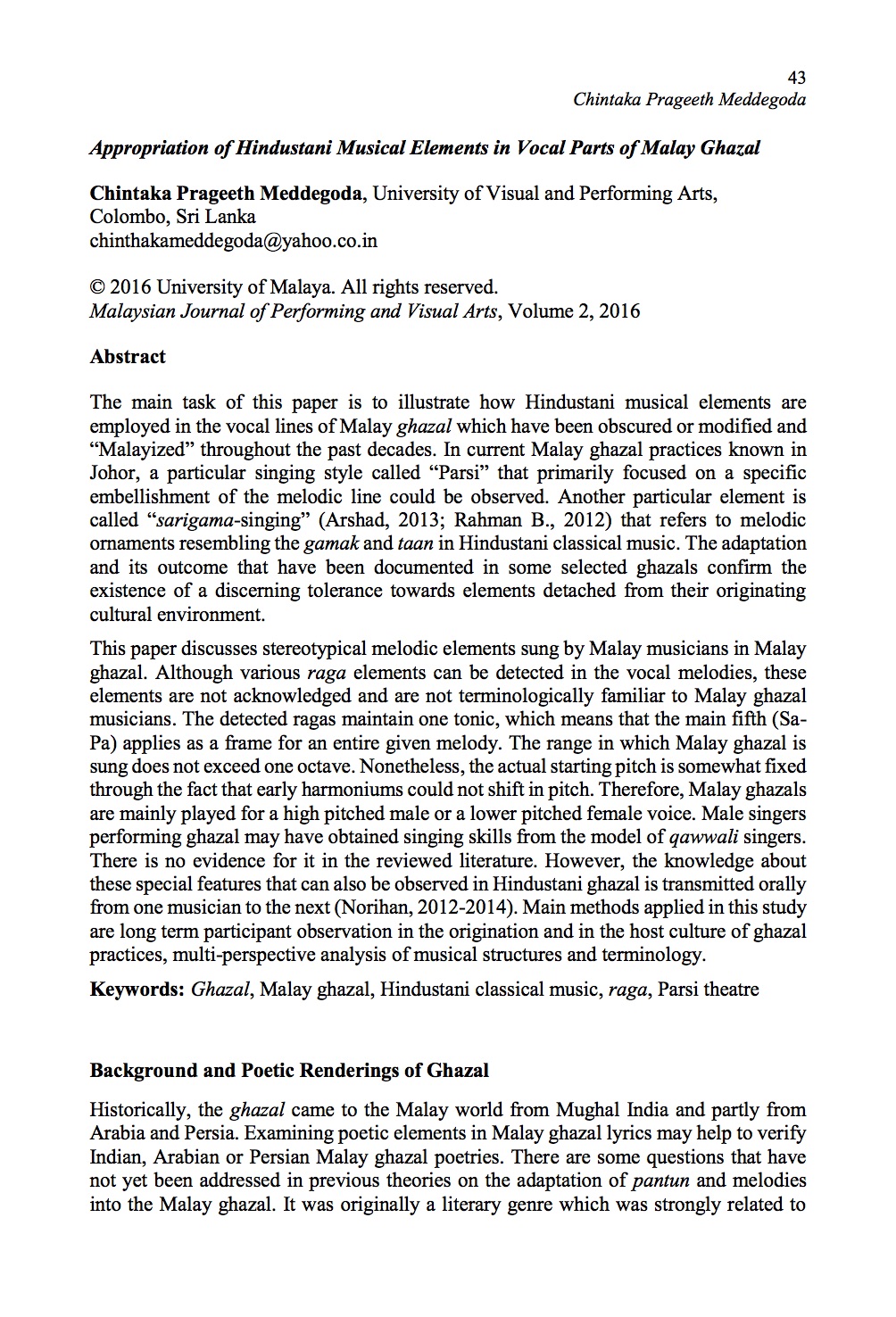Appropriation of Hindustani Musical Elements in Vocal Parts of Malay Ghazal
Main Article Content
Abstract
Abstract The main task of this paper is to illustrate how Hindustani musical elements are employed in the vocal lines of Malay ghazal which have been obscured or modified and "Malayized" throughout the past decades. In current Malay ghazal practices known in Johor, a particular singing style called "Parsi" that primarily focused on a specific embellishment of the melodic line could be observed. Another particular element is called "sarigama-singing" (Arshad, 2013; Rahman B., 2012) that refers to melodic ornaments resembling the gamak and taan in Hindustani classical music. The adaptation and its outcome that have been documented in some selected ghazals confirm the existence of a discerning tolerance towards elements detached from their originating cultural environment. This paper discusses stereotypical melodic elements sung by Malay musicians in Malay ghazal. Although various raga elements can be detected in the vocal melodies, these elements are not acknowledged and are not terminologically familiar to Malay ghazal musicians. The detected ragas maintain one tonic, which means that the main fifth (Sa-Pa) applies as a frame for an entire given melody. The range in which Malay ghazal is sung does not exceed one octave. Nonetheless, the actual starting pitch is somewhat fixed through the fact that early harmoniums could not shift in pitch. Therefore, Malay ghazals are mainly played for a high pitched male or a lower pitched female voice. Male singers performing ghazal may have obtained singing skills from the model of qawwali singers. There is no evidence for it in the reviewed literature. However, the knowledge about these special features that can also be observed in Hindustani ghazal is transmitted orally from one musician to the next (Norihan, 2012-2014). Main methods applied in this study are long term participant observation in the origination and in the host culture of ghazal practices, multi-perspective analysis of musical structures and terminology.
Downloads
Article Details
